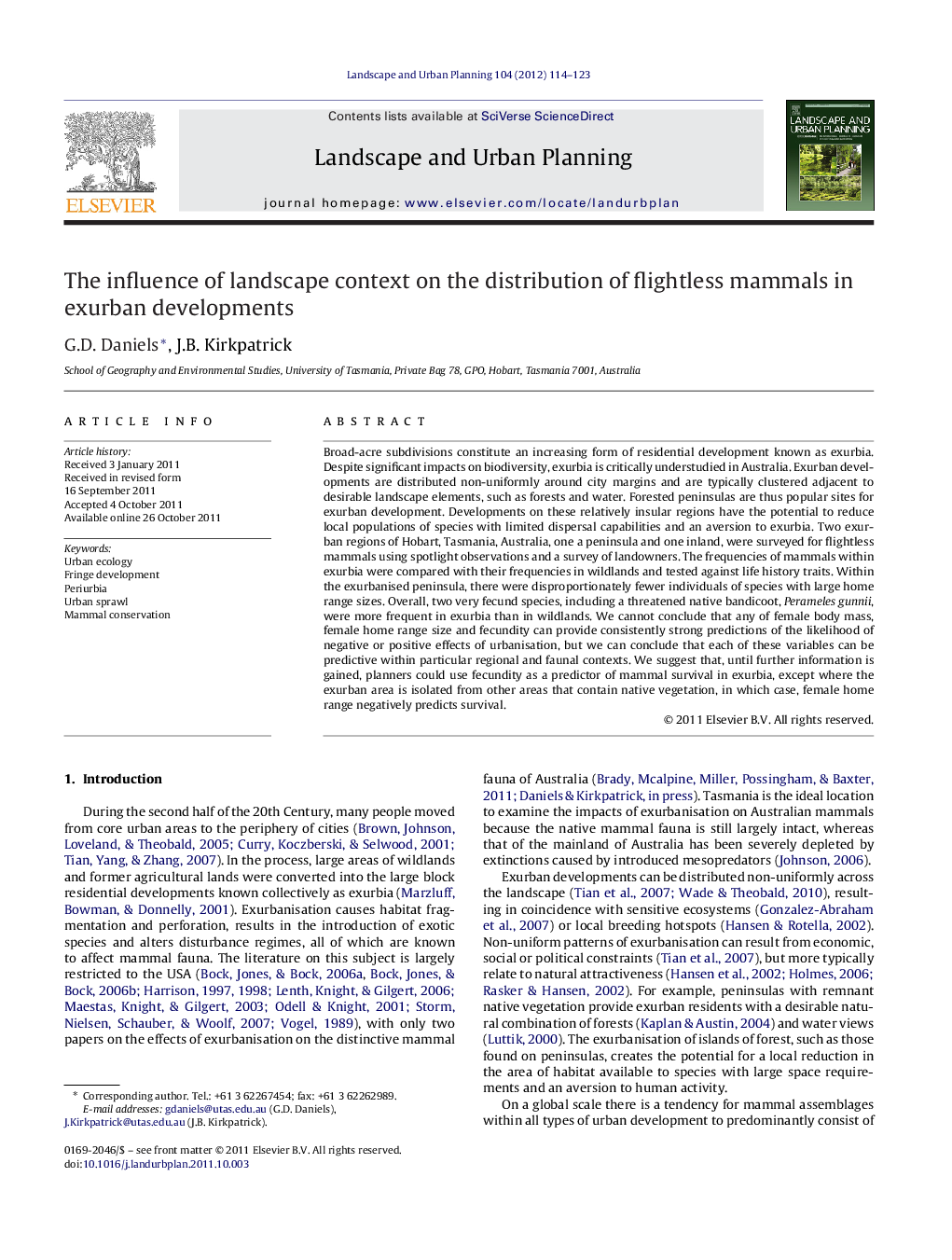| کد مقاله | کد نشریه | سال انتشار | مقاله انگلیسی | نسخه تمام متن |
|---|---|---|---|---|
| 1049568 | 945622 | 2012 | 10 صفحه PDF | دانلود رایگان |

Broad-acre subdivisions constitute an increasing form of residential development known as exurbia. Despite significant impacts on biodiversity, exurbia is critically understudied in Australia. Exurban developments are distributed non-uniformly around city margins and are typically clustered adjacent to desirable landscape elements, such as forests and water. Forested peninsulas are thus popular sites for exurban development. Developments on these relatively insular regions have the potential to reduce local populations of species with limited dispersal capabilities and an aversion to exurbia. Two exurban regions of Hobart, Tasmania, Australia, one a peninsula and one inland, were surveyed for flightless mammals using spotlight observations and a survey of landowners. The frequencies of mammals within exurbia were compared with their frequencies in wildlands and tested against life history traits. Within the exurbanised peninsula, there were disproportionately fewer individuals of species with large home range sizes. Overall, two very fecund species, including a threatened native bandicoot, Perameles gunnii, were more frequent in exurbia than in wildlands. We cannot conclude that any of female body mass, female home range size and fecundity can provide consistently strong predictions of the likelihood of negative or positive effects of urbanisation, but we can conclude that each of these variables can be predictive within particular regional and faunal contexts. We suggest that, until further information is gained, planners could use fecundity as a predictor of mammal survival in exurbia, except where the exurban area is isolated from other areas that contain native vegetation, in which case, female home range negatively predicts survival.
► Species exhibited varied responses to the process of exurbanisation.
► The threatened bandicoot Perameles gunnii was more frequently recorded in exurbia than in wildlands.
► Exurbanisation appears to locally reduce the area of habitat available to regional populations of particular mammals, as expressed by disproportionately fewer individuals of species with large home range sizes in a peninsula region.
► In a region where adjacent wildlands were extensive, fecundity was a predictor of mammal frequency in exurbia.
Journal: Landscape and Urban Planning - Volume 104, Issue 1, January 2012, Pages 114–123